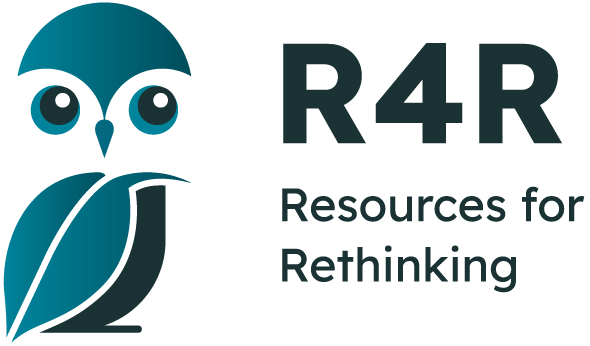Search for Resources

Resources
-
Judy Moody Saves the World
As one volume in the Judy Moody series, this book has all of the usual humorous characters and wit that has made these stories so popular. Judy Moody wonders how one person can "heal the world". She tries to get her family to rethink the products...
Full curriculum matchAvailable to Order -
Lessons from Mother Earth
In this First Nation story, Tess learns from her grandmother that her “garden” is all of nature that surrounds her. As they pick plants and berries, they do so carefully and with respect. Tess discovers that if she cares for the...
Full curriculum matchAvailable to Order -
Butterfly House
In this beautiful picture book a young girl saves a caterpillar and takes it to her grandfather. With his help she makes a butterfly house with everything a caterpillar needs. They watch the larva change from caterpillar to chrysalis to butterfly. ...
Full curriculum matchAvailable to Order -
In My World
Appropriate for very young children, this book encourages young people to appreciate nature using their five senses. Using descriptive words and cut-out pictures the book illustrates bugs, frogs, stars and many other things that a child can see...
Full curriculum matchAvailable to Order -
Hey! Get Off Our Train
In this imaginative tale a boy and his dog board a toy train at bedtime. They travel the world meeting several different endangered species along the way. When the boy hears the animals' sad stories he decides he must help them. ...
Full curriculum matchAvailable to Order -
Sandy's Incredible Shrinking Footprint
Sandy is enjoying a day at the beach with her grandfather when much to her chagrin she discovers a pile of garbage. As she cleans up the mess she is suddenly joined by the very peculiar "Garbage Lady". The "Garbage Lady" turns out to be a...
Full curriculum matchAvailable to Order -
Grandmother's Pigeon
In this beautifully illustrated story children are introduced to an extinct species, the Passenger Pigeon. Grandmother is very mysterious and as she leaves for Greenland the family wonders if they will ever see her again. The mystery deepens when...
Full curriculum matchAvailable to Order -
Miss Rumphius
Great-aunt Alice Rumphius grew up dreaming about traveling the world and living by the sea. She also wanted to do something to make the world a more beautiful place. As an adult, Miss Rumphius visited many faraway places and finally settled...
Full curriculum matchAvailable to Order -
Uno's Garden
In this richly illustrated picture book Uno arrives in a forest filled with mystical creatures like the snortlepig. Uno loves the forest so much he decides to settle and build himself a house. However it is not long before the forest...
Full curriculum matchAvailable to Order -
Where Butterflies Grow
This story takes the reader on a journey through the life of a Black Swallowtail butterfly. Children are asked to imagine themselves inside a tiny egg that hatches into a larva. Then the book describes what it would feel like to live as a...
Full curriculum matchAvailable to Order -
One Hen: How One Small Loan Made a Big Difference
This book is based on the life story of Kwabena Darko who rose from poverty to form the Sinapi Abu (Mustard Seed) Trust, which is part of the global nonprofit organization Opportunity International. Kojo has to leave school to help his mother collect...
Full curriculum matchAvailable to Order -
The Watcher
This book is based on the biography of famed researcher Jane Goodall, who lived with the chimpanzees and became such a dedicated spokesperson for this species. The book begins with a young Jane spending hours watching chickens, worms, birds and...
Full curriculum matchAvailable to Order -
Leaves
In this picture book a young bear observes how leaves change throughout the seasons. The story begins with the young bear very puzzled about why the leaves are falling off the trees. As he tries to stick the leaves back on, he becomes very...
Full curriculum matchAvailable to Order -
Biosphere Biokit Activities
This teaching resource will allow teachers and students to explore Canada’s biodiversity in a fun and interactive way at any time of the year. The resource offers a series of engaging outdoor activities that help students learn about biodiversity...
Full curriculum matchAvailable for download -
Libertad
Libertad and his little brother Julio watch as their mother is swallowed by the Guatemala City Dump on which they had depended for their livelihood. Libertad understands that he cannot earn enough to live and pay for his brother's schooling. With...
Full curriculum matchAvailable to Order -
Nowhere Else on Earth
In this non-fiction text, Caitlyn Vernon shares her knowledge and love of the Great Bear Rainforest; the largest unlogged temperate rainforest in the world. The text is broken into ten topical chapters that teach about the forest's iconic species...
Full curriculum matchAvailable to Order -
Hoot
Roy is the bullied new kid in this Southern Florida suburb. As his face is being smushed into the bus window he sees a barefooted, running boy. Roy is intrigued and seeks him out. It turns out this boy, Mullet Fingers is actually a runaway and an environmental...
Full curriculum matchAvailable to Order -
What’s Globalization Got To Do With Me?
Students explore ways in which they are linked to flows of people, capital, goods and services around the world; discuss advantages and disadvantages of globalisation; and analyse the intercultural understandings that inform working in a global context....
Full curriculum matchAvailable for download -
Freshwater: How Your T-Shirt Can Make a Difference
Did you know that the cotton t-shirt on your back has a major impact on the planet? A short series of effective graphics is used to identify the “costs” from the water required to make the t-shirt (2,700 litres) and the energy needed to grow,...
Full curriculum matchAvailable for download -
Water Cycle Jump
This highly entertaining music video, part of the Nye Tunes “Sound Track of Science”, features a rap song to effectively explain the water cycle, and includes descriptions of the key processes of evaporation, condensation, and precipitation....
Full curriculum matchAvailable for download

